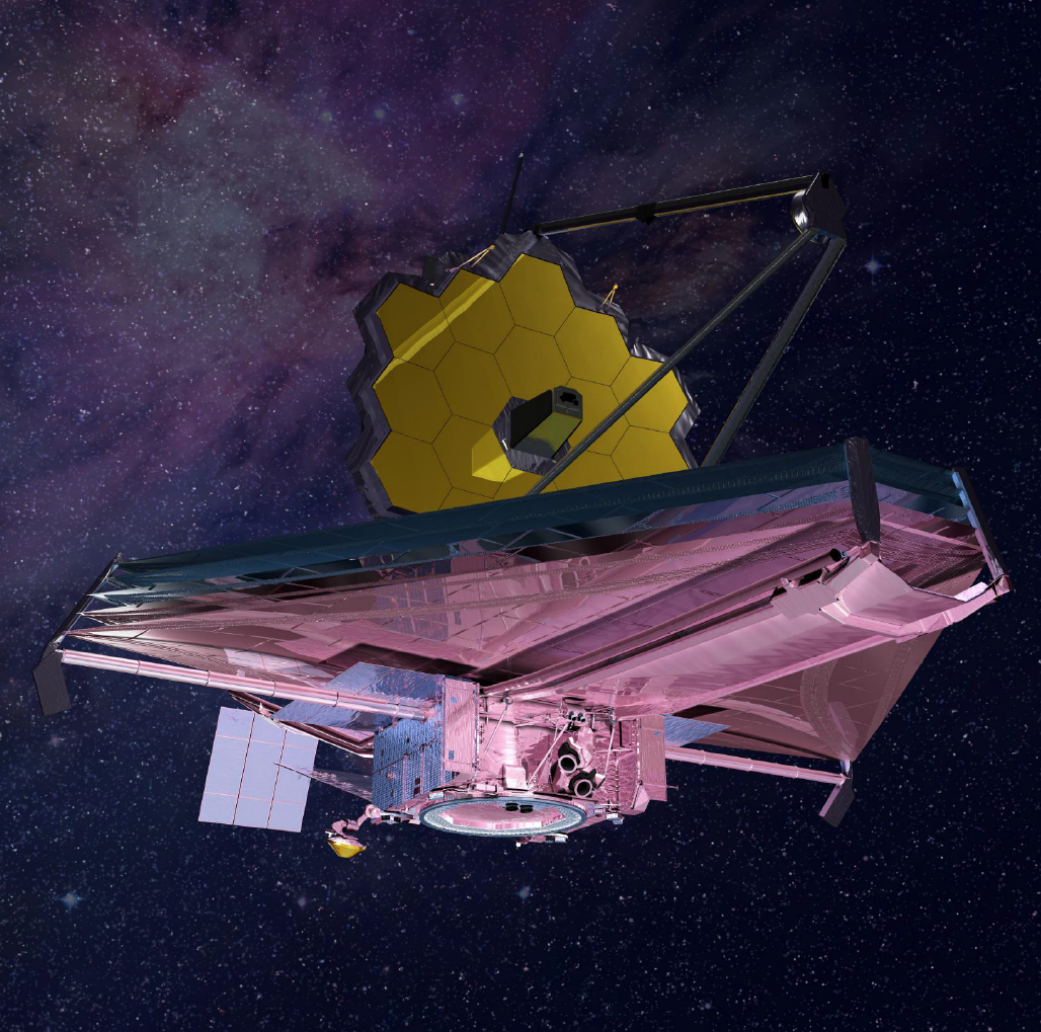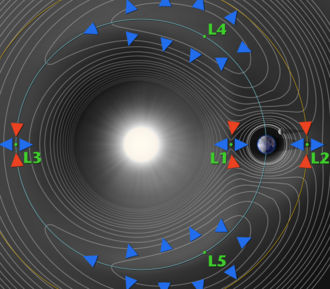AKA Lagrange points - positions in space where the gravity of Earth, Sun and moon cancel out.
Link....

Link....

Why future astronauts may be sent to 'gravity holes'
With doubts brewing about the feasibility of returning to the moon or aiming straight for Mars, another option has emerged for our next steps into space: gravitational "sweet spots" called Lagrange points that lie at least 1 million kilometres away.
A White House-commissioned task force charged with reviewing NASA's spaceflight plans is considering recommending this as part of a "deep space" option in a report expected soon. But why send humans to empty space?
Lagrange, or Lagrangian, points are great swathes of space where the gravitational acceleration from the Earth and the sun are exactly equal, letting objects stick there with very little effort.
Because they're far from warm stars and planets, they make useful havens for ultra-cold telescopes that measure fluctuations in the temperature of deep space.
The Wilkinson Microwave Anisotropy Probe (WMAP), which measures radiation from the big bang, lives at a Lagrange point called L2 more than 1 million kilometres away. The successor to the Hubble Space Telescope, the massive James Webb Space Telescope, will also be sent to the spot, which lies in line with the sun and Earth (see illustration).
>
Telescope repair
>
Solar system superhighway
>
Staging area
>
Baby steps
>
With doubts brewing about the feasibility of returning to the moon or aiming straight for Mars, another option has emerged for our next steps into space: gravitational "sweet spots" called Lagrange points that lie at least 1 million kilometres away.
A White House-commissioned task force charged with reviewing NASA's spaceflight plans is considering recommending this as part of a "deep space" option in a report expected soon. But why send humans to empty space?
Lagrange, or Lagrangian, points are great swathes of space where the gravitational acceleration from the Earth and the sun are exactly equal, letting objects stick there with very little effort.
Because they're far from warm stars and planets, they make useful havens for ultra-cold telescopes that measure fluctuations in the temperature of deep space.
The Wilkinson Microwave Anisotropy Probe (WMAP), which measures radiation from the big bang, lives at a Lagrange point called L2 more than 1 million kilometres away. The successor to the Hubble Space Telescope, the massive James Webb Space Telescope, will also be sent to the spot, which lies in line with the sun and Earth (see illustration).
>
Telescope repair
>
Solar system superhighway
>
Staging area
>
Baby steps
>

 Fractal Design Arc Mini R2, 3800X, Asus B450M-PRO mATX, 2x8GB B-die@3800C16, AMD Vega64, Seasonic 850W Gold, Black Ice Nemesis/Laing DDC/EKWB 240 Loop (VRM>CPU>GPU), Noctua Fans.
Fractal Design Arc Mini R2, 3800X, Asus B450M-PRO mATX, 2x8GB B-die@3800C16, AMD Vega64, Seasonic 850W Gold, Black Ice Nemesis/Laing DDC/EKWB 240 Loop (VRM>CPU>GPU), Noctua Fans.



Comment